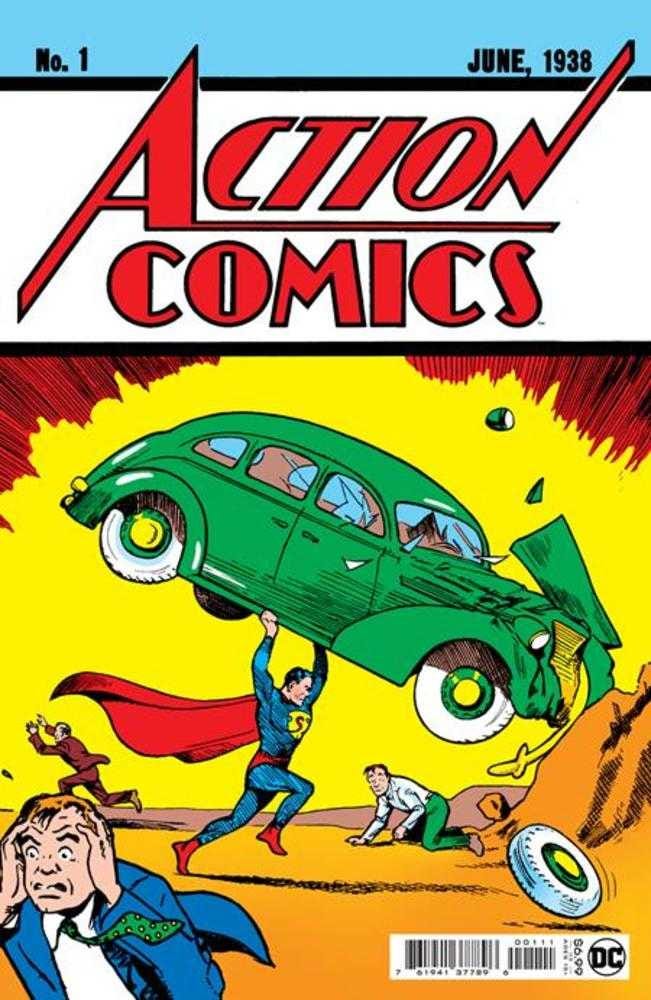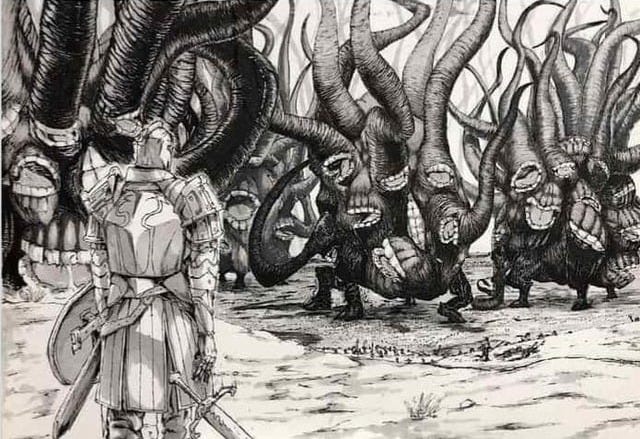The Overpowered Hero – How This Narrative Trick Makes the Side Characters the Star
Turning predictable tropes into stellar story telling
This particular trope has been quite popular in anime, where an average, ordinary person stumbles upon great power and essentially becomes a demigod in his world. The amount of isekai anime in particular has become a vast ocean, inundating the industry with this genre of storytelling. The appeal for the audience is generally to inspire greatness, even from ordinary people, and stir feelings of hope or desires of escaping their boring, powerless lives.
However, there is a more influential essence that lies within the almighty hero. Sure, he can defeat any bad guy without breaking a sweat, demolish entire armies with a flick of a wrist, and stand toe-to-toe with even the most feared gods. There may not be much room for his growth, as the heroes journey has been entirely skipped, but it lies elsewhere: the side characters.
Hello loyal readers! Thank you again for tuning in. Today we will be taking a look at the overpowered protagonist trope frequently seen in anime.
As a reminder, your feedback is critical to the success of Thunderous Fantasies. Be sure to check the link here for a survey so I know what kind of content you like to see.
https://thunderousfantasies.substack.com/survey/1996110
Early Allure for Power
Comic books were arguably the starting point of popularizing heroes among the youth. Superman, released in 1938, brought much cheer from boys and rallied them to become strong, moral figures. It was a marvelous idea, creating a fictional man with the traditional American spirit, indominable and unconquerable against nearly any foe or challenge (even with a spare, key weakness.)
While at first, we raised our hands for Superman, those same hands soon rose for Goku as he took on that role, asking for our spirit power to defeat the powerful cosmic dictator, Frieza after a brilliant spectacle of martial arts. Heros like Goku and Superman were the star focus, and while Superman inherited his powers, Goku faced a rigorous journey. In either case, the desire for heart-pumping fights took priority, placing story telling at a backseat, especially with the side characters. Krillin and Yamcha barely have had any influence throughout Dragonball Z, and Launch was entirely removed, last seen from the original Dragonball series (except for a stray cameo.) Times have been changing, and this superhero dynamic has not only been parodied, but twisted in a strange, yet welcoming way.
The *True* Heroes of Anime
It took an ordinary, yet rigorous exercise routine to transform the humble salary man, Saitama, into the limitless hero he is today (only at the cost of his hair.) As the name of the anime implies, “One Punch Man,” he is fully capable of defeating any foe with a single punch. You would initially think that a hero who can completely render any challenge trivial would be a boring, predictable tale. However, that’s surprisingly far from the truth. I would recommend this video to help further highlight how incredible this show holds up.
Despite Saitama’s uncontestable feat of strength and power, there actually is another hidden cost for achieving it. He no longer feels attachment for the world, struggling with a mental and emotional strain of yearning for a challenging foe he may never face. While the show may be a stark parody of the super-hero genre, this dynamic makes the series uniquely fascinating.
Take into the account of all the side characters in “One Punch Man.” Genos, an all-star, hyper-powered cyborg, puts up spectacular fights and overcomes a lot compared to what most heroes of the world are capable of. However, he still ends up getting demolished, usually with all his cybernetic limbs ripped and torn to shreds. As he becomes one of the first witnesses of Saitama overwhelming power, he becomes a loyal follower and apprentice, in spite of the cruel skepticism of society that doesn’t acknowledge him.
More compelling I believe is Mumen Rider, an ordinary human who rides a bike wearing store-bought safety gear. He knows he will never match the power of any of the heroes who can stop calamities caused by monsters, and in spite of witnessing the death and destruction produced by an oceanic predator, annihilating powerful heroes, he still charges in, launching his bike pathetically at the beast. Even in that moment he might not have known whether his distraction would yield results, as he was the only hope for all the citizens held hostage. But he did stop him, even if it was just as a brief distraction – and it worked! Saitama shows up just in the nick of time and saves the day.
This scene is reminiscent of “My Hero Academia.” Midoriya, despite being a genetic anomaly of not having a super power in his world, rushes in to save his high school friend from a villain. All Might, the most admired, powerful hero of Japan, struggled as he felt weak and useless thanks to a grave injury he suffered, allotting him only spare time to utilize his powers. However, after witnessing Midoriya’s heroic bravery, he was inspired to push his wounded body further beyond, and quickly deal with the situation before others got hurt.
It takes an expert level of story telling to showcase the influence a character has over others. In a story where the protagonist is all-powerful, it is practically essential to a narrative. If the story solely relies on this protagonist, there would be a lot of missed opportunity of expanding the world and the characters living in it, and can risk predictability and repetitiveness.
Loyalties in Strength
Over the last few years, we’ve all heard the phrase “peace through strength.” This phrase embodies the idea of being a warrior in a garden, as opposed to being a gardener in a war.
A common theme in a lot of isekai anime, where the protagonist is suddenly enraptured into a whole other world, the main character amasses a following throughout the series. They evoke such overwhelming power and ability, yet often maintain a level of humbleness and sincerity that carried over from their previous life. This type of modest leadership brings them mighty retainers who follow with potent loyalty.
One popular example is “The Time I Got Reincarnated as a Slime.” Rimuru gathers a lot of power as a humble slime monster. Yet over time, he amasses a team of strong, sentient creatures, including a powerful dragon that was feared throughout the world. He even united the many bestial races and formed a civilization, commanded by his league of individuals, possessing boundless strength in their own right, who would eagerly throw their lives for Rimuru’s sake. This showcases Rimurur’s true power not being in his destructive potential or his uncontestable abilities, but how he chooses alternative means to get what he wants, negotiating peace and striving for common ground – peace through strength.
Even in the anime, “Overlord,” Ains inherited a nefarious, powerful kingdom. All his followers, like Rimuru’s also are impossibly strong, yet respect him with the same level of admiration. Even when there was questions or confusion by his underlings, they still obeyed Ains with either blind faith, or with a profound misunderstanding of his intentions (often induced by some magically compelled speech of an unknown explanation.)
The Pillar the World Stands On
A supremely powerful protagonist can also help leverage the world building experience for the audience. How do the common folk react to the sudden rising of a new king? What is the army commander thinking when he sees his own men demolished by a small iota of the main character’s power? What are the other leaders of rivaling nations plotting to address this threat? There are bountiful brilliant opportunities to expand upon the world when you have an all-powerful main character.
We see a lot of this especially in season three of the slime anime I mentioned. Rimuru overcame a lot of challenges and conflicts throughout the series. After all the epic feats of power displayed for our pleasure, he is now capable of focusing on building his kingdom. We’ve seen many examples of cultural exchanges, uniting civilizations, scientific advancement, and some rather tough peace deals and acts of political subversion. While some may reasonably criticize the shift away from action-packed magical brawls, slowing the story down to a snail’s pace by comparison, I argue it’s still a compelling means to highlight the world in this setting.
In Overlord, we see the human civilizations in fear and panic as Ains expands his kingdom. Even the mighty heroes who foolishly stepped forth into his domain, seeking treasure, were quickly and cruelly humbled. He even brings human villages and towns under his protection as his army occupies them. The kingdoms, desperate to fend off Ain’s unrelenting forces, feel some reprieve when their mightiest heroes are able to seemingly hold him back – only to be revealed to the viewer it’s all just a psyop to help further Ain’s goals.
Thank you for reading! Let us know in the comments what you think about the overpowered hero trope!







